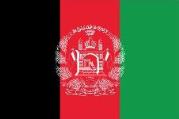 |
 |
|
Menu HomeAfghan ReportDaily ReadKabul NEOMapsGlossarySite MapAdsThis website is an Amazon Associate and earns money for qualifying purchases.
(SidebarLeftAds) |
Control of a DistrictAfghan War News> Districts > Control of a District There are about 400 districts located in 34 provinces across Afghanistan. The vast majority of these districts are under "government control". The meaning of "government control" is subject to interpretation. 1. Explanation of District Control. Effective "control of a district" would indicate certain metrics have been obtained. These metrics would include the following measurements. The Taliban 'shadow government' does not function, the formal or informal judicial system is used (not the Taliban's judicial courts), the roads are clear of IEDs, insurgent activity is at a minimum, residents are not in fear for their lives, schools are open and not under the influence of the Taliban, and medical clinics are functioning and free from Taliban intimidation, and commerce is lively with an active bazaar. A functioning district would have a District Governor (DGov) and District Chief of Police (DCoP) working in the district center on a daily basis as well as representatives from MoPH, MRRD, and other government ministries. The Afghan National Police would have a handle on crime and are able to freely move about the district. Explanation of Control of a District Center. The "control of a district center" is when a district center compound is occupied by Afghan National Police (ANP) with possible augmentation from other security forces such as the Afghan Local Police (ALP) and Afghan National Army (ANA). The actual terrain controlled under this situation would be the maximum effective range of the Afghan National Defense Security Forces (ANDSF) weapons systems - likely AK-47s and PKM machine guns. 400-800 meters during the day and much less at night. The DGov is likely not present - conducting his business by cell phone from the provincial capital or Kabul. The DCoP may or may not be present. Very few government representatives will be found - in fear for their safety and unable to work if present because their movement in the district is extremely limited. In effect, a small compound is secure but isolated from its citizens and very little in the form of governance or development takes place. In many cases the district security forces are resupplied by air with air support from the Afghan Air Force or by periodic convoys by the Afghan National Army. Taliban Control of District Centers. Every fighting season (April to October) the Taliban manage to wrest control of several district centers. They hold on to the district centers for a few days or weeks until the Afghan government security forces mount a counterattack to regain control of the district center. Many times, upon determining that a government operation is about to commence, the Taliban will withdraw - usually after planting a number of IEDs in the area and along the access routes to the district center. Clear, Hold and Build. In a counterinsurgency environment the counterinsurgent forces would clear an area, hold it with security forces and then build up the area through governance and development. The Afghan National Defense and Security Forces are doing well with the "clearing" operations - typically conducted with the Special Operations kandaks and regular ANA units in conjuction with the Afghan National Police and National Directorate of Security. 3. Unfortunately the "hold" and "build" part of the counterinsurgency is lacking. The "hold" part usually amounts to the stationing of 30-50 Afghan National Police tasked with occupying the district center (and very little patrolling outside the compound walls). The "build" part usually doesn't take place - government officials (DGov, ministry representatives, teachers, and others) are hesitant to re-enter a contested district and will conduct business from the provincial capitals. 2. Districts Under Contested or Under Taliban Control. The Afghan government is less than transparent about which districts country are contested by the Taliban and which districts are controlled by the Taliban. Resolute Support HQs has taken its eye off the districts and probably doesn't have a clue. There is some information available for those not privy to the classified reporting (which probably is less than accurate). One of the better sources is The Long War Journal which has published a map of those districts contested by or controlled by the Taliban. See "Taliban controls or contests scores of districts in Afghanistan", by Bill Roggio and Caleb Weiss, The Long War Journal, October 5, 2015. In addition, the Long War Journal update a district control map periodically. Many districts operate under parallel forms of government - with the Afghan government funding health clinics and education but the Taliban actually providing the administration within the district.
|
Books about AfghanistanAll external sites open up in a new window. |
|

